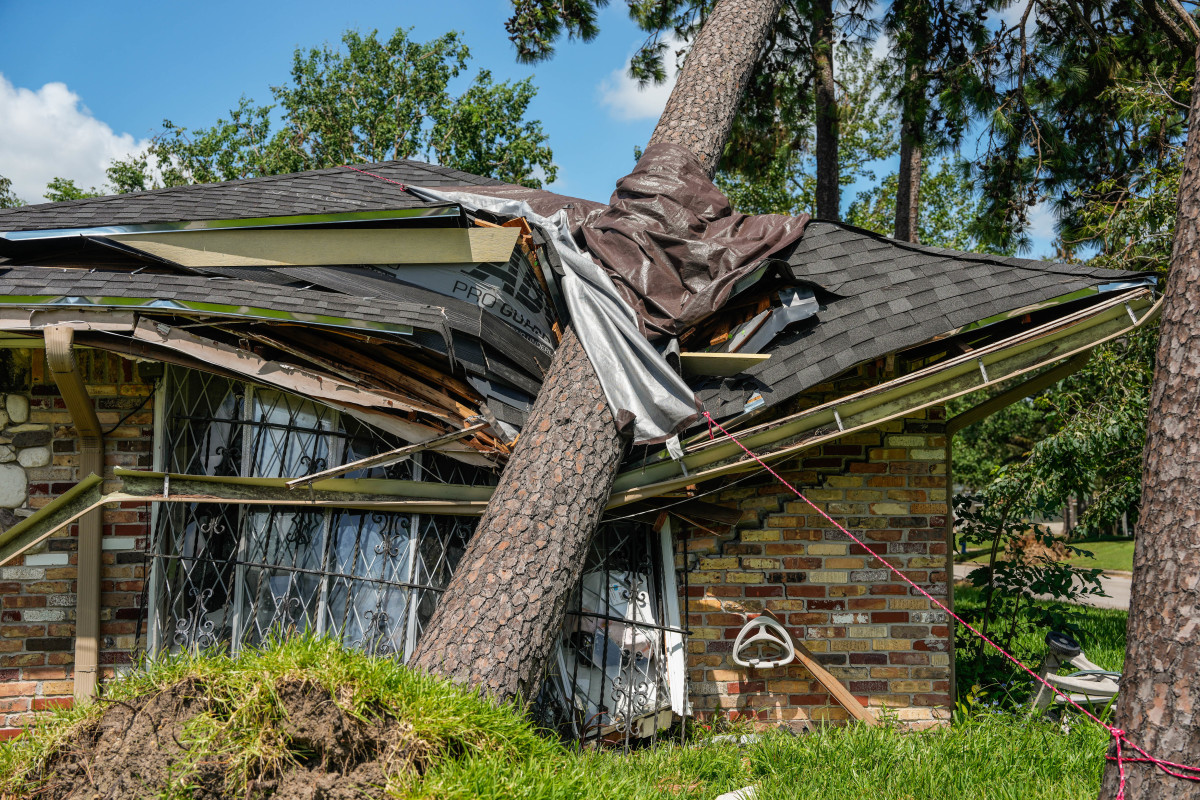On July 8, 2024, Hurricane Beryl made landfall near Matagorda, Texas, at around 4 a.m. Central Daylight Time.
The storm had ripped through parts of the Caribbean and the Yucatán Peninsula before reaching the U.S. Gulf Coast 2 hours southwest of Houston.
This was the first hurricane, as well as the first Category 5 hurricane, of the extremely active 2024 Atlantic hurricane season and it broke several meteorological records –primarily for formation and intensity.
Described as the fiercest and earliest Atlantic storm ever recorded, Beryl caused 69 deaths, at least 40 of them in the Houston area, while estimates of the U.S. economic loss ranged from $28 billion to $32 billion.
And yet as destructive as Hurricane Beryl was, artificial intelligence played an important role in helping to avert deaths.
When Beryl was rushing across the Atlantic basin, GraphCast, the weather forecasting tool produced by Google DeepMind, the tech company’s AI unit, saw something other models missed, Bloomberg reported.

Houston Chronicle/Hearst Newspapers via Getty Images/Getty Images
AI requires human oversight
GraphCast correctly forecast the storm would take a sharp turn away from southern Mexico to southern Texas nearly a week earlier than conventional forecasts did.
Another model, the proprietary Horizon AI Global from Climavision of Louisville, Ky., also predicted the Texas landfall with a lead time of roughly nine days, far exceeding traditional models.
More Tech Stocks:
- As Palantir rolls on, rivals are worth a second look
- Nvidia’s next big thing could be flying cars
- Cathie Wood sells $21.4 million of surging AI stocks
“The introduction of AI for hurricane tracking has given scientists a new tool that is more accessible,” according to an Oct. 1 blog post on the Florida Museum of Natural History’s website. “Unlike traditional models, the AI used to track hurricanes can be run on laptops instead of supercomputers and consumes less energy.”
“This technology may help scientists predict the strength of fast-moving hurricanes more quickly and accurately.”
Google DeepMind has been trained with 40 years of weather descriptions and is learning to forecast the intensity and strength of hurricanes,
However, the post noted, this does not mean AI will be taking over weather prediction. “Google DeepMind, as well as other AI models, still [makes] mistakes, and humans are needed to monitor them and analyze their data,” the post said.
In addition to hurricanes, AI is being trained to predict and manage such natural disasters as earthquakes, floods and forest fires.
Natural disasters take a heavy economic toll.
The average number of billion-dollar disasters per year has grown to 19 events annually during the past 10 years from about three events annually during the 1980s.
The total cost of U.S. billion-dollar disasters from 2020 through 2024 totaled $746.7 billion, with a five-year annual cost average of $149.3 billion, according to Climate.gov.
Predicting earthquakes is Holy Grail
“Fire agencies are exploring a suite of AI innovations to combat blazes such as machine-learning algorithms that analyze satellite data to forecast fire paths,” IBM staff writer Sascha Brodsky recently said.
At the same time, networks of smart sensors scan for heat signatures and filter out false alarms, potentially giving firefighters crucial early warnings, he wrote.
Brodsky said agencies were using AI in the field, including Austin Energy, which has deployed an AI-powered network of cameras across central Texas that automatically scans for signs of wildfire, aiming to spot blazes before they spread.
Related: Prediction markets coming on strong, analysts say
Floods account for as much as 40% of weather-related disasters worldwide, and a team of researchers at Penn State has developed a hydrological model that can forecast flooding impacts and manage water resources on a global scale.
“This model is a game changer for global hydrology,” said Chaopeng Shen, Penn State professor of civil and environmental engineering.
In 2023, a team of researchers at the University of Texas at Austin released the results of a seven-month trial conducted in China after using artificial intelligence to correctly predict 70% of earthquakes one week before they happened.
The team from the Jackson School of Geosciences trained its AI algorithm on five years of seismic recordings in the region, then asked it to locate upcoming quakes based on current seismic activity.
The algorithm successfully forecast 14 earthquakes, each within about 200 miles of its epicenter. It also missed one quake and predicted eight that never happened.
Many scientists have long considered earthquake forecasting to be impossible, the university said, but given recent advancements in AI, “some researchers started considering whether that could change, and the UT Austin trial has bolstered hopes within the field.”
“Predicting earthquakes is the holy grail,” said Sergey Fomel, a geoscientist at UT Austin and a member of the research team.
“We’re not yet close to making predictions for anywhere in the world, but what we achieved tells us that what we thought was an impossible problem is solvable in principle.”
Related: Amazon’s Rufus, other AI shopping assistants gain strong adoption, face consumer concerns
#plays #expanding #role #predicting #natural #disasters